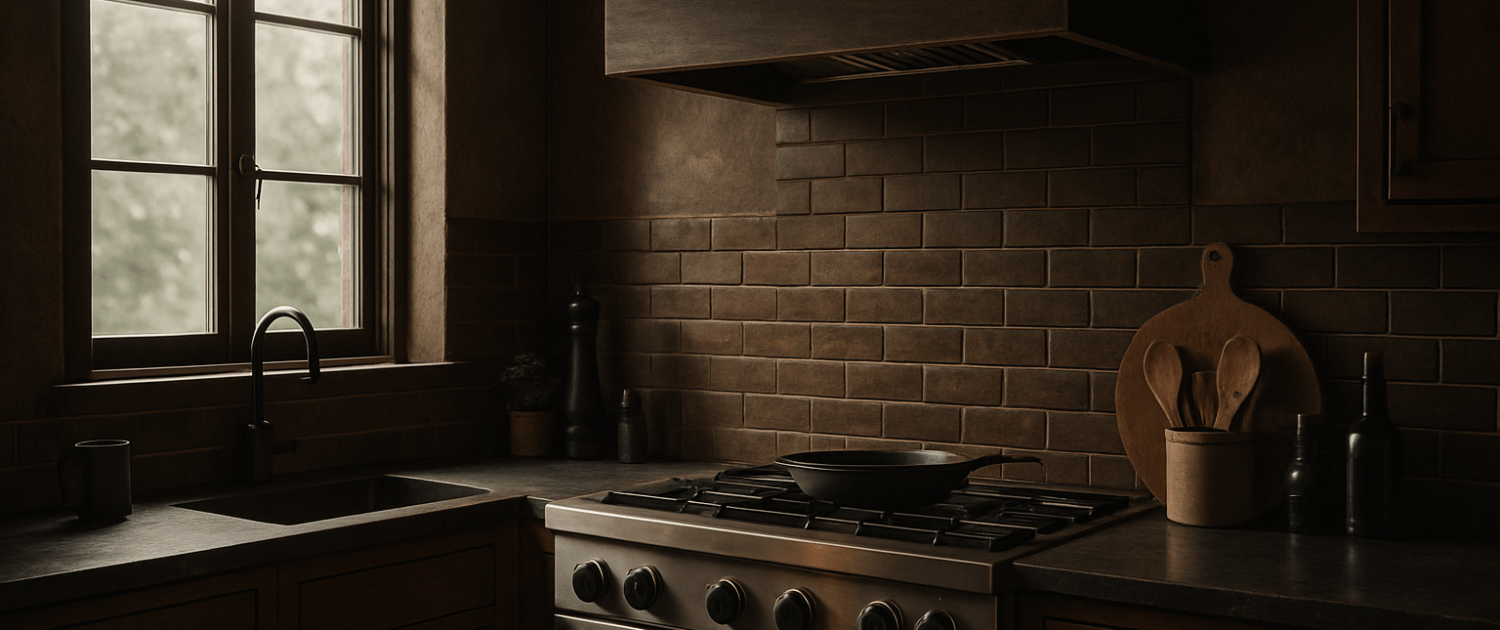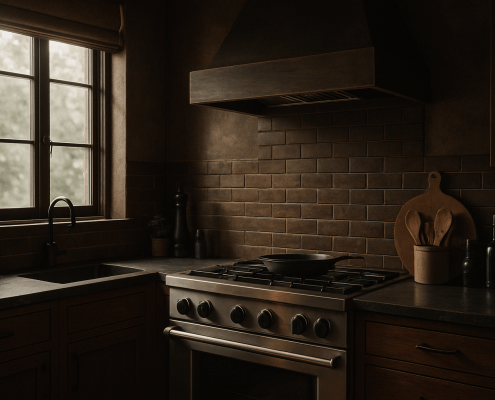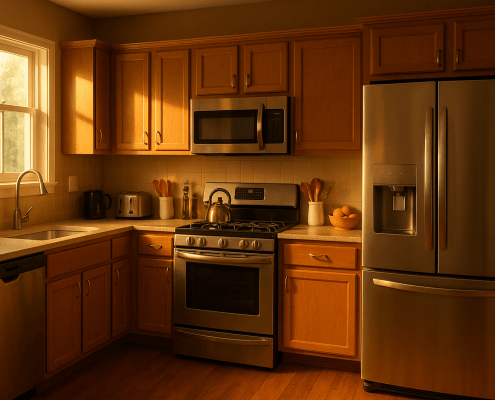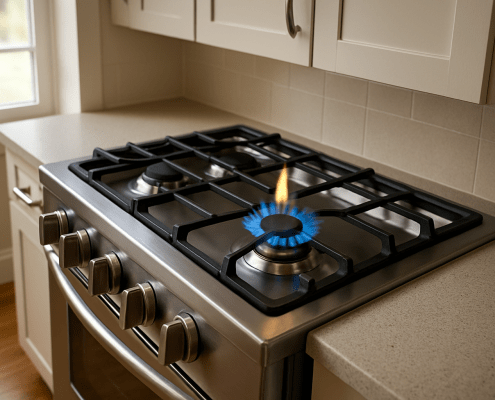How a Power Outage Can Increase Carbon Monoxide in Your Home
Steven E / Monday July 14, 2025
When the lights go out, it’s not just the inconvenience you need to worry about, power outages can actually make your home more vulnerable to carbon monoxide (CO). From using portable generators to improperly vented heaters, blackouts create the perfect conditions for CO buildup. Here’s why power outages increase the risk of carbon monoxide and how you can keep your home and family safe.
Why Carbon Monoxide Is Dangerous
Carbon monoxide is a colorless, odorless gas produced whenever fuels like natural gas, propane, gasoline, or wood are burned.
In normal conditions, properly vented gas appliances safely send CO outside. But if exhaust gases are trapped indoors or appliances are misused, CO can build up quickly to dangerous levels.
Symptoms of CO poisoning include:
- Headache
- Nausea
- Dizziness
- Confusion
- Fatigue
At high levels, it can be fatal. Since you can’t see or smell it, prevention is your best defense.
Why Power Outages Increase the Risk
Here are the main ways a power outage makes your home more vulnerable to CO:
Portable Generators
Generators are the most common culprit of CO poisoning during outages. If a generator is placed too close to the house, in a garage, or near windows or vents, exhaust can seep inside.
Generators produce a significant amount of CO, and just a few minutes of running in an enclosed space can fill it with dangerous fumes.
Indoor Use of Outdoor Equipment
When it’s cold and dark, some people bring outdoor grills, camp stoves, or heaters inside. These devices are never meant for indoor use, and their CO output can overwhelm a closed space quickly.
Malfunctioning Gas Appliances
During a blackout, your furnace blower fan won’t run. That means combustion gases from a gas furnace or water heater might not vent properly. This can backdraft CO into your home if the appliances aren’t in good condition.
Blocked Vents
A snowstorm that causes an outage may also block exterior vents with snow and ice, preventing exhaust gases from escaping.
Unmaintained Chimneys and Flues
When power’s out, you may rely more on your fireplace or wood stove. If the chimney or flue is blocked or dirty, smoke and CO can back up into your living space.
How to Protect Yourself During a Power Outage
You can dramatically reduce your risk of CO poisoning during an outage by following a few smart practices.
Install and Test CO Detectors
- Place at least one CO detector near sleeping areas and one on each level of your home.
- Test detectors monthly and replace batteries annually.
- Replace detectors entirely every 5–7 years.
Use Generators Safely
- Keep portable generators at least 20 feet away from your home.
- Never operate them in a garage, basement, or near open windows.
- Point the exhaust away from the house and neighbors.
Never Bring Outdoor Equipment Inside
- Charcoal grills, propane camp stoves, and gas-powered heaters designed for outdoor use produce dangerous levels of CO indoors.
- Only use appliances indoors if they’re specifically designed and rated for indoor use.
Check Vents and Chimneys
- Before winter storms, inspect exterior vents and chimneys to make sure they’re clear of debris and snow.
- During an outage, check vents periodically to keep them unblocked.
Avoid Overloading Gas Appliances
- If your furnace or water heater loses power to the blower or controls, don’t try to bypass safety features to keep them running.
- Let appliances operate only as designed.
Maintain Your Appliances Before Trouble Strikes
The best time to prepare for a power outage is before it happens. Keeping your appliances and venting systems in good shape year-round means they’re ready when you need them most.
Inspect and Clean Vents
- Make sure all furnace, water heater, and dryer vents are free of lint, dust, nests, or blockages.
- Repair any disconnected or damaged vent pipes.
Test Furnace and Water Heater Burners
- Look for steady blue flames when they’re operating. Yellow or flickering flames mean incomplete combustion and possible CO production.
Check Chimneys and Flues
- Have chimneys cleaned annually to remove creosote and debris.
- Inspect for cracks or loose bricks that can let gases escape into your home.
Replace Worn Parts
- Swap out worn thermocouples, flame sensors, or gaskets on gas appliances to ensure they shut off properly if something goes wrong.
- Keep vents properly sealed at all joints.
Service Generators
- Change oil and filters, and run your generator periodically to keep it in good working order.
- Store fuel safely and use a fuel stabilizer to keep it fresh.
Recognize the Warning Signs
Even with precautions, you should always be aware of potential CO buildup. Watch for these signs:
- Stale, stuffy air
- Soot or scorch marks near appliances
- Pilot lights that keep going out
- Excess moisture on windows or walls
- Family members or pets showing symptoms of CO poisoning
If you notice any of these, shut down all fuel-burning appliances, ventilate the home, and get outside immediately.
Where To Find Us
If you need any replacement parts for your appliances, you can enter your model number at AppliancePartsPros.com to locate and order them quickly. Most orders arrive in just two business days, and we have tons of great information in our repair help section and YouTube videos to help you troubleshoot.
Stay connected with the latest DIY tips, tutorial videos, and repair guides by following us on Facebook, Instagram, and Twitter. We love hearing about your repair stories and successes. If you need more help or want personalized guidance, feel free to reach out. We’re ready to help you take on your next project with confidence!
The information in this article may not apply to your specific appliance model. We recommend consulting your manufacturer’s documentation or contact us with any questions.
With nearly a decade of experience in providing top-notch customer service regarding appliance parts and repair, Steven enjoys sharing practical advice, troubleshooting tips, and interesting information to help readers stay informed.





